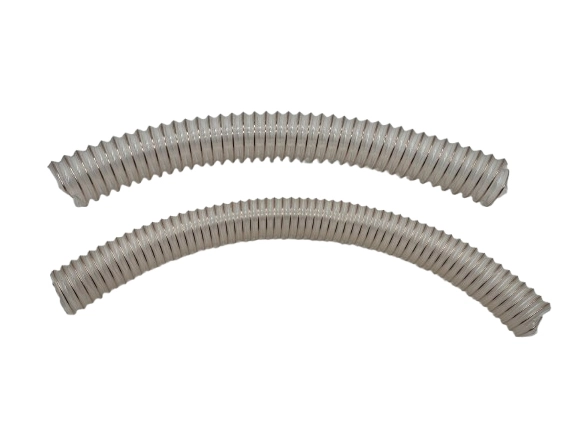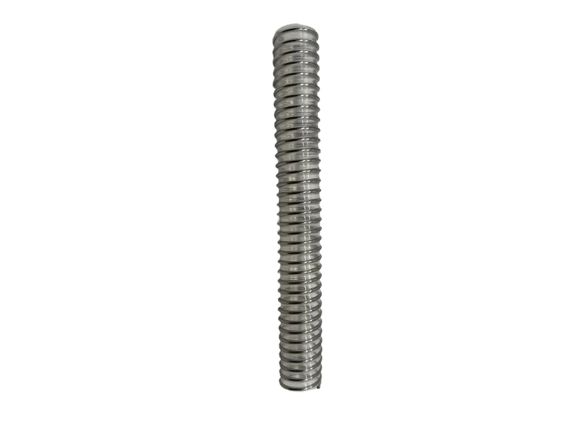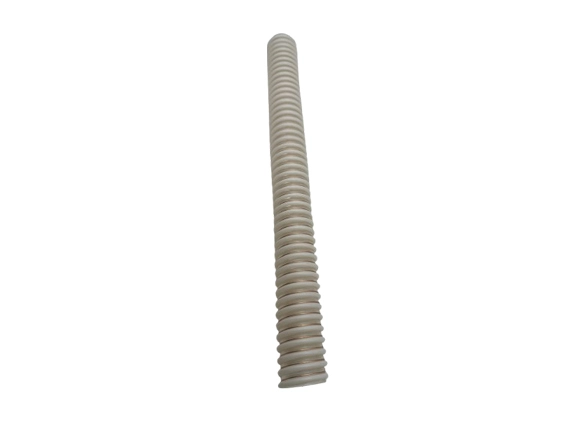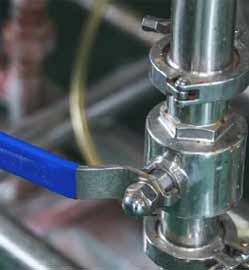PU flexible ducting hose is a type of flexible hose which is made from polyurethane (PU), itis known for its high abrasion resistance, tear strength, and flexibility,will make it suitable for applications like dust and fume extraction, material transfer, and woodworking.



PU Flexible Ducting Hose, short for Polyurethane Flexible Ducting Hose, is a remarkable product known for its flexibility, durability, and wide range of applications.PU flexible ducting hoses are primarily made from polyurethane material. Polyurethane is a polymer with unique properties that contribute to the hose's performance. The inner layer of the hose is usually a smooth polyurethane lining. This smooth surface reduces friction, which is crucial when fluids or gases are being transported through the hose. It allows for efficient flow, minimizing pressure drops and ensuring that the conveyed substances can move freely.
The outer layer is also made of polyurethane, often with added reinforcements. These reinforcements can come in the form of spiral wires or textile braids. Spiral wires, for example, are embedded within the polyurethane outer layer. They provide structural integrity, allowing the hose to maintain its shape under different conditions, such as when it is bent or subjected to external pressures. The textile braids, on the other hand, enhance the hose's resistance to abrasion and mechanical stress. This combination of materials in the inner and outer layers makes the PU flexible ducting hose suitable for a variety of demanding applications.
In industrial settings, maintaining a healthy and safe working environment is crucial. PU flexible ducting hoses are extensively used in industrial ventilation systems. Factories often generate a significant amount of dust, fumes, and harmful gases during manufacturing processes. For example, in a metal - processing plant, grinding and welding operations release metal particles and toxic fumes into the air. PU flexible ducting hoses are used to capture and transport these pollutants away from the work area. Their flexibility allows for easy installation around complex machinery and in tight spaces. They can be bent at various angles without kinking, ensuring efficient air flow. In large - scale industrial facilities, these hoses connect the ventilation hoods located near the source of pollution to the main exhaust system. This helps to keep the air inside the factory clean, protecting the health of workers and complying with environmental regulations.
PU and PVC air hoses differ in several aspects, including material properties, performance characteristics, and cost. Here is a detailed comparison:
· PU (Polyurethane): It is a polymer material formed by the reaction of polyols and isocyanates. PU has a dense and uniform molecular structure, which gives it excellent mechanical properties. It is inherently flexible, tough, and has good abrasion resistance. The addition of reinforcing agents like spiral wires or textile braids further enhances its strength and durability.
· PVC (Polyvinyl Chloride): Made from the polymerization of vinyl chloride monomers. PVC is a relatively rigid material in its pure form, and plasticizers are often added to make it flexible. However, the molecular structure of PVC is not as stable as that of PU, and the plasticizers may migrate over time, affecting the hose's properties.
· Flexibility:
· PU Air Hoses: Extremely flexible, they can be bent at tight angles without kinking or collapsing. This makes them ideal for applications where the hose needs to be routed through confined spaces or around obstacles.
· PVC Air Hoses: They are less flexible than PU hoses. Although plasticizers increase their flexibility, they are still more prone to kinking, especially when bent frequently or at sharp angles.
· Durability:
· PU Air Hoses: Highly durable, resistant to abrasion, punctures, and mechanical stress. They can withstand rough handling and continuous use in demanding industrial environments. Their resistance to weathering also makes them suitable for both indoor and outdoor applications.
· PVC Air Hoses: Have moderate durability. They are more vulnerable to abrasion and punctures compared to PU hoses. Without proper reinforcement, PVC hoses can be easily damaged, and their lifespan may be shorter in harsh conditions.
· Chemical Resistance:
· PU Air Hoses: Exhibit good resistance to a wide range of chemicals, including oils, fuels, and many solvents. This makes them suitable for applications where the air may be contaminated with chemical substances.
· PVC Air Hoses: Have limited chemical resistance. They are more sensitive to strong acids, alkalis, and some organic solvents, which can cause swelling, cracking, or degradation of the hose material.
· Temperature Resistance:
· PU Air Hoses: Can operate over a wide temperature range. They remain flexible in cold temperatures and can withstand high temperatures without significant deformation or loss of performance.
· PVC Air Hoses: Are more sensitive to temperature changes. They can become stiff and brittle in cold conditions, and may soften and lose their shape at high temperatures, limiting their use in extreme - temperature applications.
Abrasion resistance:
PU hoses are more resistant to wear and tear, especially at higher temperatures.
Chemical resistance:
PU hoses can withstand exposure to many chemicals, oils, and solvents.
Good flexibility in low temperatures:
PU hoses maintain flexibility even in cold conditions.
High pressure and vacuum resistance:
PU is more resistant to pressure and vacuum applications than PVC.
Longer lifespan:
PU hoses tend to retain their shape and flexibility for longer periods, as they don't contain plasticizers that can degrade over time.
Versatile:
PU hoses are suitable for a wide range of applications, including conveying solids, liquids, and gases.



